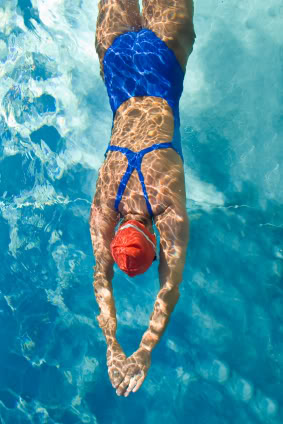 |
 |
 |
 The first thing to know about babies and chiropractic care is that they
are completely compatible. Chiropractic techniques for babies are safe
and gentle, oftentimes using no more pressure than you would on a closed
eyelid. A chiropractor is able to make small adjustments in the spine
using only light touch, which has big effects on the child's health and
well-being. The first thing to know about babies and chiropractic care is that they
are completely compatible. Chiropractic techniques for babies are safe
and gentle, oftentimes using no more pressure than you would on a closed
eyelid. A chiropractor is able to make small adjustments in the spine
using only light touch, which has big effects on the child's health and
well-being.
The process of birth can be quite traumatic, especially when some of the
more intense medical intervention procedures, such as suction or forceps, are
involved. It can actually lead to a condition called TBS - Traumatic Birth
Syndrome - which may manifest in different ways. Fortunately, through
small adjustments of the spine, much of this trauma can be relieved, creating a
more pleasant post-partum experience for both baby and parents. The way
this works is through treating vertebral subluxations, because the subluxations can impinge upon
nerve function and cause neurological distress if left untreated.
Another important condition in babies that chiropractic can help
with is
colic. Oftentimes, the digestive distress that babies with colic
experience can be traced back to spinal tension that is affecting
(irritating)
the nerves which support the digestive process. By relieving this
tension
in the spine, the child will experience far less pain and digestive
upset. A happy baby is far preferable to a crying, unhappy and
pained baby. As more and more parents explore chiropractic care for
their
children, more is learned about the many benefits available.
|
|
 |
 |
 Swimming is known to be beneficial on several levels and is a form of
exercise that is appropriate at all ages. From children playing in the
pool to competitive swimming to water aerobics to swimming laps weekly, there
are a number of ways to enjoyably better one's health in the water. Swimming is known to be beneficial on several levels and is a form of
exercise that is appropriate at all ages. From children playing in the
pool to competitive swimming to water aerobics to swimming laps weekly, there
are a number of ways to enjoyably better one's health in the water.
Swimming is gentle: While water resistance is much stronger than air
resistance, there is no impact on the joints with swimming. This is
helpful both in maintaining good joint health, and also for those who already
have joint injuries. This also makes it a great choice for older people
who are looking for a safe way to keep their body in good shape.
Swimming is good for cardiovascular health and circulation: Swimming is a full
body workout which challenges the heart to pump extra oxygen to all the muscles
in the body. The longer one swims, the more of a cardiovascular workout
they will have. Endurance and interval training can be used to increase
the cardiovascular effects of swimming.
Swimming improves lung function: Over time, the pattern of holding one's breath
between strokes will increase lung capacity, something that is especially
important for all of us as lung capacity can diminish over time. The
humid air inhaled can also improve the health of lungs and decrease asthma
symptoms, although not in a chlorinated pool as the chemicals can be
irritating.
Swimming promotes muscular strength: Swimming strengthens and tones the whole
body – arms, shoulders, back, abs, and legs. Doing a variety of
strokes increases the number of muscles used, and of course, the water resistance
has a great deal to do with the effectiveness of the workout.
Swimming has psychological and mental benefits: Swimming
promotes a heightened
sense of well being, builds confidence and self-esteem, and helps
develop skills like goal-setting and time management. Many people
find that
swimming regularly increases their sense of balance in life and becomes
somewhat of a sanctuary during times of stress. |
|
 |
 |
True health is something that many people talk about, but very few
actually have a definition for. If you look to the western medical world,
health might be defined as a "lack of disease," but obviously this is
a very limited view of the human condition. One might describe health as
the state of everything in the body working at optimum function, but this
leaves out the mental, psychological and spiritual states of being.
A healthy diet, adequate exercise, a sense of balance in life, a good social
support system, spiritual fulfillment and a positive outlook: all of these
things contribute to health. True health is how it all comes together –
the mental, emotional, spiritual, physical and social aspects of one's
life. Everything we experience and encounter affects our health: the food
we eat, the air we breathe, the people we spend our time around, how much sleep
we get, etc.
In striving for true health, a good path to take is to create a lifestyle that
is active with all the things you enjoy doing in life. Finding work you
enjoy is obviously going to be a big bonus, but there should be more than
that. Having a social group to interact with is important, as are having
solitary activities. One's physical health is obviously a large
component, but by finding healthy activities and positive ways of approaching
life, you can improve your physical, mental and psychological health all at the
same time!
|
|
 |
|
|
|
 |
|
In This Issue
|
|
 |
|
Contact Information
|
Jane Smith

888-888-8888
Website
|

|
|
Little Healthy Habits to Adopt
|
|
– Use your abs. Keeping your abdominals engaged will help you
stand up straight, support your spine, and prevent bad posture.
– Use every opportunity to move your body. Do balance
exercises in line at the grocery store, roll you wrists and ankles and do small
stretches while waiting to get off a plane. You could also practice leg lifts in your chair at
work while you're on the phone.
– Make cleaning a part of your daily routine. If you wipe the
kitchen counter each time after you cook, you'll never face a filthy
counter. The same goes for bathroom counters and faucets. Doing
small cleaning along the way means that your "big clean" can focus on
deep cleaning instead of little surface areas.
– Eat small snacks and meals throughout the day instead of large
meals. Keep in mind that you should be eating the most at breakfast and then
increasingly smaller meals throughout the day.
|

|
|
Travel Tip For Healthy Bodies: Stretching
|
 When traveling, whether by plane, train or automobile, it is important
to remember the effects that it has on your body. Extended periods of
time spent sitting down can lead to sore a back, cramped muscles and
fatigue. When driving, the continuous effort of pushing the gas and brake
pedals with your right leg often lends itself to uneven tension in the
body. The key to feeling good in your body during travel is taking the
time to stretch.
Stretch in the airport, in your seat,
in the isle of the train, at each stop you make along a road trips,anywhere and everywhere you can. Keep your
joints moving, do gentle head rolls, find time to straighten your legs, do
lunges or reach for your toes, move your back around, and so on. If you're
seated and feel yourself getting tense but you can't get up to stretch at that
time, try this trick: tense your shoulders, raising them up toward your ears,
take a deep breathe in and on the exhale, drop your shoulders and release all
the tension in your body. Do that a few times and then get up to stretch
as soon as you're able.
|
|
 |
